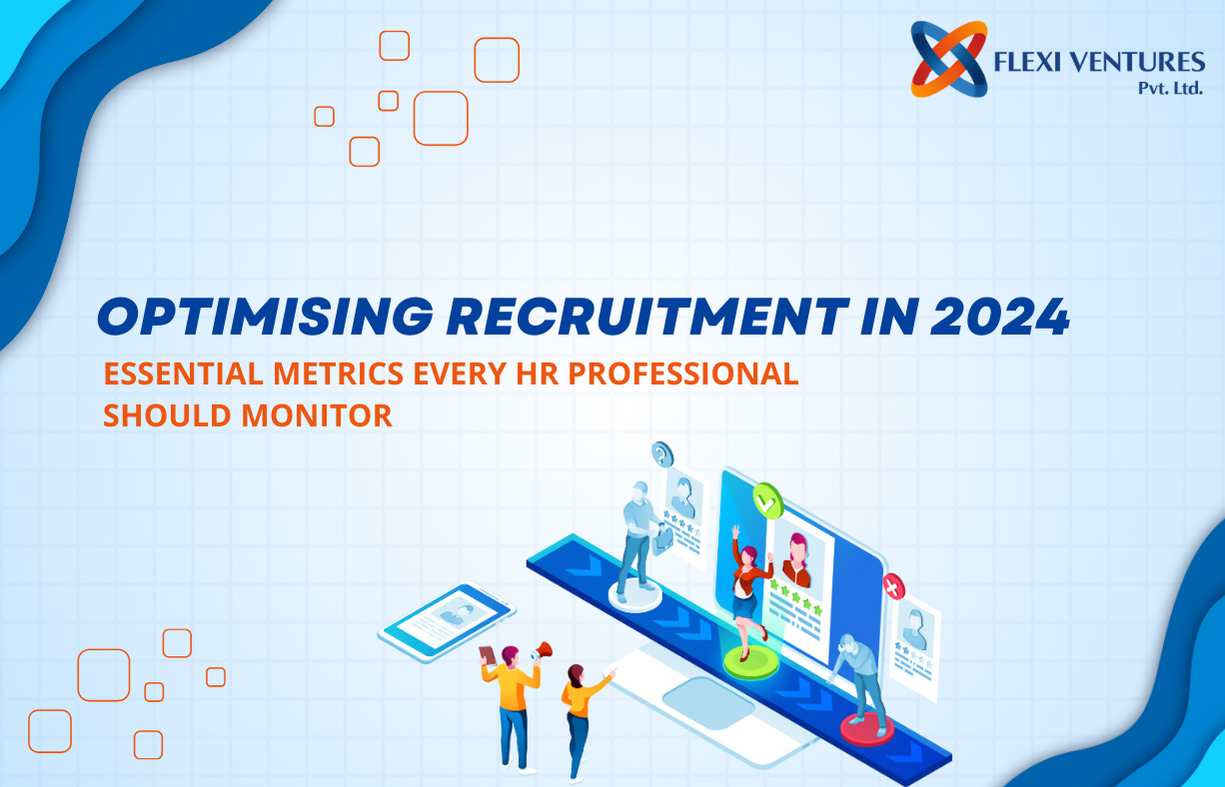Human Resources (HR) departments rely on optimising recruitment process and metrics to scale the strategies’ effectiveness and initiatives. These HR metrics provide pivotal data that enables organizations to make informed decisions, identify areas for improvement, and align their HR practices with overall Organisational business objectives. By tracking and analyzing key HR metrics, companies can optimize workforce management, enhance employee engagement, and ultimately drive better business goals and outcomes.
The Meaning of the Recruitment Matrix
Recruitment metrics are data points that organizations use to measure and track various functional aspects of their human resources departments. These metrics provide assessable information about the performance, efficiency, and effectiveness of an organization’s workforce and HR initiatives.
These metrics encompass various areas, including employee recruitment, retention, training, engagement, and productivity. By closely monitoring these metrics, HR professionals and organizational leaders can gain valuable insights into what’s working well and what’s not, identify areas for improvement, and understand how the business’s human capital contributes to overall performance.
Key Recruitment Metrics
Tracking recruitment metrics enables you to make data-driven decisions throughout the hiring process. These metrics provide real-time insights and predictions to optimize your team’s performance. By evaluating the success of different strategies, you can make informed business decisions that drive sustainable growth.
1. Time to Fill
The time it takes to fill a position is one of the most crucial metrics for measuring recruiting success. This metric is tracked by measuring the duration from when a position is posted to when it is filled.
Time to fill excludes any part of the interview process; it solely measures the period from the job opening date to the placement of a candidate.
If this number is increasing over time, it may indicate issues with your hiring process or the quality of candidates.
2. Time to Hire
The time it takes for a candidate to get hired from the day they entered the pipeline is known as the Time to Hire. It measures how quickly you process a candidate and deliver results for them. In contrast, Time to Fill measures how quickly you deliver results for your clients by filling a position from the date it was posted.
3. Cost per Hire
This metric indicates the cost per employee and helps determine if it makes sense to adjust your hiring budget.
To calculate it, divide the total cost of all hires made during the year by the number of hires made in the same period.
How to calculate Cost per Hire
Apply the Cost per cost-per-hire formula:
Cost per Hire=Total Recruitment CostsTotal Number of HiresCost per Hire=Total Number of HiresTotal Recruitment Costs
4. Revenue per Recruiter
Revenue per recruiter provides a rough estimate of how much money each recruiter generates for the agency. To calculate this, measure the total revenue your agency generates over a given period (Typically a year), and then divide this figure by the number of recruiters currently employed.
How to Calculate Revenue per Recruiter:
Apply the Revenue per Recruiter Formula:
Revenue per Recruiter=Total RevenueNumber of RecruitersRevenue per Recruiter=Number of RecruitersTotal Revenue
5. Submittals per recruiter
Submittals per recruiter measure the number of job candidate submissions a recruiter makes to a client in a month. Tracking this metric helps evaluate a recruiter’s productivity and improve the time-to-hire for a position by identifying bottlenecks in the recruitment process and implementing corrective measures.
6. Submittals: interview: offer: placement ratio
This metric is the ratio between the number of job submissions your agency receives, the number of candidates interviewed offers made, and placements achieved.
Here are the key components:
- Applications (µ): The number of people who submit applications for a job opening.
- Interviews: The number of applicants interviewed for a job opening.
- Offers: The number of offers extended to candidates from a job opening.
- Placements: The number of actual hires made from a job opening.
7. Average placement value
One of the most important metrics to track is your average placement value. This metric gauges the average amount of money your clients pay you per placement.
It measures your earnings per placement and is a key indicator of your return on investment (ROI). By analyzing revenue per placement, this metric reveals how effectively you are performing your job. It indicates whether you are providing good value to your clients or if they are paying extra out of pocket. For optimal results, aim to ensure that the Average Placement Value is at least twice the Cost Per Placement.
8. Number of new clients acquired every month
Getting a new client is the best thing that can happen to your business. It signifies revenue generation and growth, both in terms of your clientele and the quality of your services.
But how do you measure success? How to know if your business is expanding?
One key way to measure growth is by tracking the number of new clients you acquire each month. An increase in this number indicates that more people are hearing about you and choosing to work with you.
Additionally, you can use this metric as a benchmark to evaluate the effectiveness of your marketing efforts, enhancing and optimising recruitment process.
9. Percentage of clients who give you a second Job Order after the first one
“A satisfied customer is the best kind of customer.” But did you know that a single satisfied client can be more valuable than having 100 clients?
When a client returns for a second job order within a short period, they’re signaling that you did something right—and they are more likely to return. This reduces the time spent searching for new clients.
You can use this metric to gauge how well you’re keeping your clients happy, which is crucial for any business.
10. Forecasted/pipelined revenue
Revenue forecasting involves estimating future revenues by analyzing past performances and current trends. This process is essential for developing a good business plan and guiding decisions such as budgeting and resource allocation. Reliable revenue projections are crucial for making well-informed decisions about allocating resources to achieve desired outcomes.
The recruitment industry is notoriously challenging.
There are numerous variables at play: From attracting and screening candidates to successfully placing them in jobs. Additionally, your ultimate goal is to make a profit while ensuring client satisfaction and adhering to industry standards.
This article on various recruiting metrics will help you Optimising Recruitment process, plan and execute your goals more smoothly!







